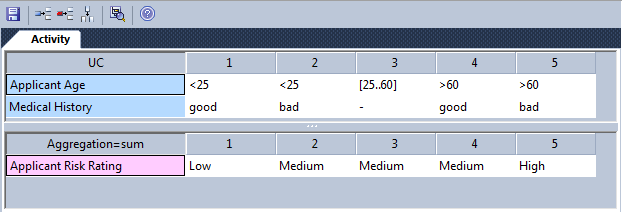| Prev | Next |
Decision Table Editor
Getting to know the Decision Table Editor
Aspect |
Description |
|---|---|
|
Introducing the Decision Table Editor |
The Decision Table Editor provides a convenient and intuitive way to record the way that decisions are made in an organization or industry. A number of conditions can be defined and columns can be added that contain values, one or more conclusions can be added with applicable columns where the decision value is entered. The Decision Table Editor is based on the Object Management Groups (OMG) Decision Model and Notation (DMN) specification and can be used to generate implementation code using predefined macros. An analyst will occasionally need to record the way that decisions are made in an organization in a formal way. There is often also the need to express the conditions and the resulting decisions in a way that will assist an implementation team design a solution. The Decision Table Editor built into Enterprise Architect can assist in expressing and implementing the way that decisions are made.
|
|
Where to find the Decision Table Editor |
Ribbon: Design > Impact > Decisions > Manage Decisions |
|
Usage of the Decision Table Editor |
An analyst will occasionally need to record the way that decisions are made in an organization in a formal way. There is often also the need to express the conditions and the resulting decisions in a way that will assist an implementation team design a solution. The Decision Table Editor built into Enterprise Architect can assist in expressing and implementing the way that decisions are made. |
|
Options for the Decision Table Editor |
The Decision Table Editor can be used simply to record the conditions and the conclusions that form the basis of decision making. Alternatively implementation code can be generated using the Enterprise Architect Simulation Library (EASL) code generation macros.
|
|
Learn more about the Decision Table Editor |



